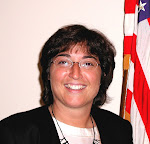Saturday, April 11, 2009 – Mykonos Greece!
I have always wanted to visit Mykonos. You hear so much about this island of white-washed homes. It was an afternoon-only port of call so we did not have much time to explore.
The morning was spent working in the room on many projects. We realize the time is soon upon us to get organized and packed, which will require strength and patience!!! And maybe some extra space in suitcases. Many, many people have purchased additional suitcases!
Mykonos –
We had to tender as they were repairing their pier (of all days!). But it was a short five minute ride and we were right on the beach and main street in the town of Hora. Wandered around to see a few of the 365 beautiful churches from the Byzantine period, fish stalls made of marble and many cafes along the water’s edge. Petros is the local pelican and town mascot.
Mykonos, in the Cyclades chain of islands in the Aegean Sea, is a mass tourist destination known for its intense nightlife, white-washed buildings and beaches. With a population today of 9,300, archeologists found settlement on Mykonos in the early part of the 11th century BC. From as early as the 16th century, the windmills are one of the most recognized landmarks of the island.
I opted for the ship’s tour to Delos, 22 miles off of Mykonos, one of the most important archaeological sites in Greece. The ship had chartered a boat to transfer about 100 of us and we had the entire island to ourselves. As you approach, the guidebooks state it looks like a pile of stones…and they are right! It is hard to distinguish much from the reconstructed stone structures until you reach land. There are very few tall structures remaining, due to the earthquakes through the years.
According to Greek legend, the twin Gods Apollo and Artemis were born to Leto on the shores at Delos’ Sacred Lake and the event rocked the ancient world. Temples went up, the island was cleansed (corpses were removed), and a sizeable community of priests and privileged classes was established with a population of 25,000.
Various homes in the remains of the city have existing mosaic flooring so we explored several of them scattered along extremely narrow cobblestone streets which were made for walking, and not for animals and carts. The theatre, with seats for 5500, is still there, as is the Avenue of the Lions (from 7th century BC), the Agora (market place), the Temple of Apollo and the Sacred Way.
For nearly 1000 years, this sanctuary as the political and religious center of the Aegean and host to the Delian Festival every four years. In the 4th century BC, the Romans turned it into a grand trade fair and made Delos a free port. It also became Greece’s slave market where as many as 10,000 slaves were said to be sold on one day. By 300AD, the island had only a small Christian community and then became a pirate lair during the Ottoman period. The French came along in the late 1800s to begin the major excavations you see today.
And again, the flowers made the day. The red poppies, the yellow ?? and the blue ?? were beautiful. Absolutely beautiful. And we were the only people on the island!! We were told it is hot with dead grass in the summer and overrun with tourists, but you have to go when you are there! We were fortunate to see it under these conditions.
I wandered the streets of Hora and enjoyed the creative designs in the jewelry shops. There are some wonderfully small boutique hotels (which I can imagine may be noisy in the high season) and a multitude of cafes. Very typical white washed houses, winding and very narrow streets, small Greek Orthodox white washed churches with domes and windmills high on the hill. Picturesque.
Carvery dinner with friends in the alternative restaurant. The entertainment was a double-bill: Nick Lewin (comedian) and David McLaine (vocalist) but we missed some of it due to our late dinner.
skip to main |
skip to sidebar

Luisa of Preferred Travel, Essex, CT // LGTravel@verizon.net
Author

Followers
Blog Archive
-
▼
2009
(125)
-
▼
April
(31)
- My first thoughts today
- First day at home
- Arrival back to the United States of America!
- Galley tour and last day on the ship...
- 16 nautical miles north of the Titanic
- Formal Tea/ At sea in the Atlantic...
- Dad's Birthday...
- Helicopter airlifted passenger and last Black and ...
- No photos...
- Photo of roses from Birthday!
- Transferring from the QV to the QM2
- 3rd day at sea -- frantically packing!!
- 2nd day at sea...
- On the way to the UK...1st day at sea
- Barcelona Spain
- At Sea - lecture on the Concorde!
- Rome, the Eternal City
- At sea...
- Easter in Athens!
- Mykonos Greece
- Istanbul, Turkey
- Kusadasi Turkey for EPHESUS
- Sea day April 8
- Egypt!
- Transiting the Suez Canal
- Count your blessings
- Petra, Jordan
- Red Sea and sunshine
- Red Sea and Carol Thatcher
- April's Fools Day
- at sea...March 31
-
▼
April
(31)
About Me
- Luisa / Preferred Travel, Essex, CT
- Travel agent and theatre-lover. Always ready for the next adventure! Are you??